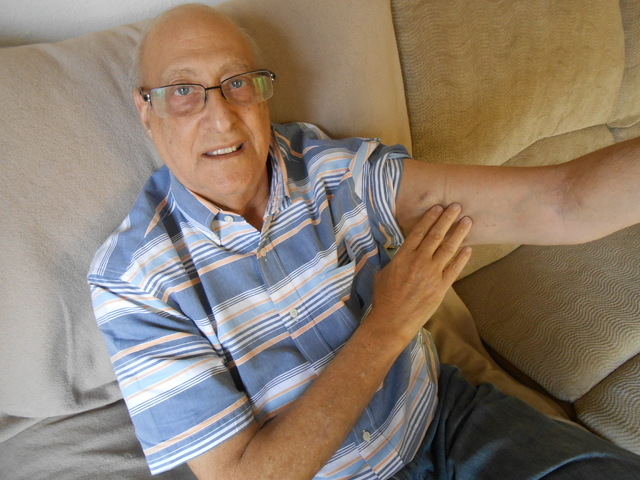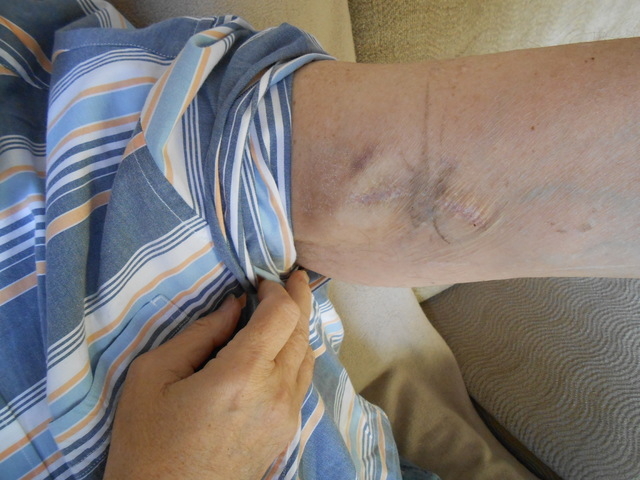Dialysis provides lifeline to those with kidney disease
Las Vegan Alan Sherman started kidney dialysis in March 2014.
The retired respiratory therapist will always remember the exact day his odds of becoming a kidney patient skyrocketed.
“Diabetes was my 40th birthday present to myself,” said Sherman. “Of course, I was in denial.”
Diabetes is a major risk factor for chronic kidney disease. Other risk factors include: high blood pressure, family history of kidney failure, kidney stones, prolonged use of over-the-counter pain medications and being older than 60.
Sherman, 68, managed his diabetes and found ways to help others with the disease. He became a camp counselor for children and teens with diabetes and now serves as president of the board of the Southern Nevada Diabetes Association.
But after 26 years, even though he had been meticulous with the management of his diabetes, two consecutive lab tests showed he was in kidney failure and would need to start kidney dialysis.
Dialysis is a type of renal (kidney) replacement therapy that is used to provide an artificial replacement for lost kidney function caused by renal failure. It is a life support treatment and does not treat any kidney diseases, according to the AmericanAssociation of Kidney Patients.
History of Dialysis
Dialysis as we know it today is a relatively modern treatment for renal failure. In March 1960, the first repeated dialysis was performed at the University of Washington Hospital in Seattle. The world’s first outpatient dialysis center, the Seattle Artificial Kidney Center, was established in 1962 and was quickly overrun with prospective patients.
Because so many kidney patients sought treatment, an ethically disturbing, anonymous lay committee was formed to select which “medically suitable” patients would be treated by the center. The group became known as the “God Committee.”
On Nov. 4, 1971, Shep Glazer, on behalf of kidney patients, testified before the House Ways and Means Committee while attached to a fully functioning artificial kidney machine. He convinced Congress that no one should die waiting for dialysis. In Oct. 1972, legislation was passed into law that provided federal government financing for nearly all Americans with kidney failure. This law established an end stage renal disease (ESRD) benefit within Medicare, regardless of a person’s age.
In 1972, about 10,000 people were receiving dialysis. By 2013, that number had grown to nearly 470,000, according to the United States Renal Data System.
Education is the key to coping with dialysis
“The kidney is essentially a filter, like a pool filter,” explained nephrology physician, Benjamin Rudnitsky with the Nevada Kidney Disease and Hypertension Centers. “Its primary function is to filter the blood (of) waste products.”
There are five stages of chronic kidney disease.
“Usually, we don’t see them here until Stage Three,” said Rudnitsky. “When you move to Stage Four, you start that natural process about educating the patient about dialysis and transplant.”
“It’s scary for a patient and there’s so many things to think about,” Rudnitsky said. “When you start dialysis, it’s much better for the person if they go in with wide-open eyes.”
Different kinds of dialysis
“People need to be educated and decide what kind of dialysis they want,” Rudnitsky said. “The patient and family make that choice — they decide.”
There are two kinds of dialysis: hemodialysis, or HD, and peritoneal dialysis, or PD. Each one has different modalities. An access point must be created no matter which type of dialysis is chosen.
In the United States, more than 10 times as many patients receive hemodialysis treatments at a clinic as those who do peritoneal dialysis and in-home HD, combined.
Hemodialysis, the treatment of removing waste products and fluid from the blood using an artificial kidney machine, is usually performed at a dialysis facility three times a week with each treatment commonly lasting four hours. In-center hemodialysis is the type that most people think of when they hear the word dialysis. But there are other options:
• Conventional home HD requires four to 12 hours of training and help from a dependable partner for treatments commonly lasting four hours, three times a week.
• Short home HD is usually done for two hours each time, but must be done five to six times per week.
• Nocturnal HD is performed while sleeping. It can be performed at a dialysis facilty three times a week or at home five to seven times a week.
Peritoneal dialysis is a completely different kind of dialysis that uses osmosis to remove waste products and extra fluids from the blood into a cleansing liquid.
There are two types of PD:
• Continuous ambulatory peritoneal dialysis: A bag of dialysis solution is drained into the abdomen through an access tube. After four to six hours, the solution is drained and the treatment is repeated with fresh solution. This is called an exchange. Gravity is used instead of a machine. Typically three or four exchanges are performed during the day and one is done overnight while sleeping.
• Continuous cycler-assisted peritoneal dialysis: An automated cycler machine performs three to five exchanges at night during sleep. In the morning, one exchange is performed with a dwell time that lasts the entire day.
Nephrology doctor Rudnitsky sees both HD and PD patients.
“My experience with it is that people on peritoneal (PD) tend to work more — they’re more likely to stay independent, they feel healthier and happier — and can travel (easier),” Rudnitsky said. “But some people don’t like the idea of doing it themselves. It’s good to have both choices.”
For Sherman, who chose conventional HD in a facility, the worst part of dialysis was the amount of time it took and the fatigue afterward.
“People don’t realize what you have to go through to stay alive,” Sherman said.
On Feb. 16, 2016, Sherman received a kidney transplant at the University Medical Center Transplant Center.
Finding support
For Richard Blaine, 78, high blood pressure and childhood kidney issues led him to dialysis in 2004. The retired engineer took a proactive approach to finding out all he could about available treatments.
“Like most people, I thought you go to a clinic — stick your arm out and they drain your blood — then put it back in,” Blaine said. “Then I found out there’s a variety of ways to do that, but there’s this other thing called PD. The more I looked into it, the more I realized I had more control over my life doing PD.”
Because it was important to Blaine to share what he had learned about dialysis with others, he founded the Living Well with Kidney Disease support group. The group consists of pre-dialysis, dialysis (both HD and PD) and transplanted patients who share information and experiences.
Twenty-two months after starting dialysis, Blaine received a kidney transplant at the now closed Sunrise Hospital Transplantation Center.
Both Sherman and Blaine agree that a positive attitude is needed to face dialysis.
“This isn’t a perfectly smooth system — there’s going to be bumps along the way but it’s not anything you can’t handle,” Blaine said.
Doctor’s advice on dialysis
Ideally, a transplanted kidney is the answer to end-stage renal failure but in the meantime, thousands of people turn to dialysis to keep themselves alive.
“Keep your chin up,” advised Rudnitsky. “Give dialysis a try — if you’re really miserable or your life is really poor — there’s no rule that says you have to stay on it. But if you decide not to do it and you die — you can’t change your mind.”
HELP IS AVAILABLE
To find out more:
The National Kidney Foundation: www.kidney.org
The American Association of Kidney Patients: www.aakp.org
Living Well with Kidney Disease Support Group: www.aakp.org/community/support-groups/item/living-well-with-kidney-disease.html with meetings on the second Sunday of each month at 1 p.m at the Blue Ox Tavern, 5825 W. Sahara Ave. Contact Richard Blaine at 702-419-2438, or email: kidneykid@cox.net




























